Of Bluebells and Golden Caddis Fly Larvae
By Ruth D’Alessandro, The Wildlife Gardener Someone once said they wouldn’t know a caddis fly larva if it bit them on the bum. The Wildlife Gardener knows about caddis fly larvae precisely BECAUSE one of them once bit her on the bum.
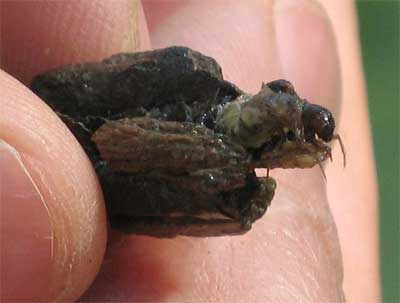
At the age of 3, waist deep in a ford in Berkshire, a gritty little cigar-shaped thing became lodged inside my swimming costume and kept nipping my backside. Once the toddler hysteria had died down enough to retrieve the biting object, my Dad identified the creature as a caddis fly larva all encased in a cocoon of sand and tiny pieces of pebble. There, there. All better now. And I didn’t think about caddis flies much for another 38 years. Caddis flies belong to the order Trichoptera and are small, drab, grey, winged insects closely related to butterflies and moths. They live near ponds and streams, laying their eggs, which hatch into aquatic nymphs, in water. These succulent nymphs are widely eaten by fish, so to protect themselves they build a protective sheath around their bodies using silk and whatever camouflaging materials are available in their environs. They trundle around the stream bed in their armour and pop back into it if danger approaches. And so to a trip to see the fabulous and famous bluebells at nearby Staffhurst Woods with la famille Wildlife Gardener.
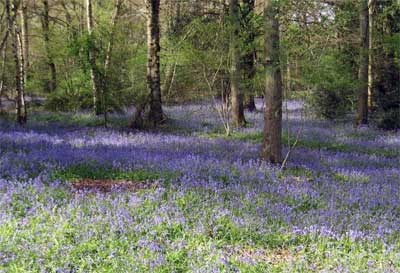
Staffhurst Woods has to be top of my all-time favourite woodlands. Ancient and unspoilt with open vistas of the downs and intimate waterways, it is a pleasure at any time of year. The Wildlife Gardener was particularly taken with the management of two ponds, both with bales of barley straw in them to counteract the algae, and the obvious residue of a professional slubbing-out on the sides. A small channel of flowing water connected the ponds, and of course we couldn’t resist a bit of a pond dip. Something was moving along the bottom of the channel. It wasn’t a great diving beetle. It looked like a bundle of twigs:
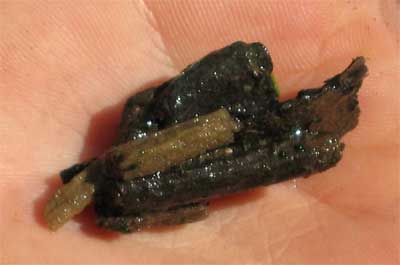
I pulled it out and a repressed memory flashed back. A caddis fly larva! Only this time, instead of sand and pebbles, the natives of this clayey spring line have only twigs and leaves to protect themselves with. But the larvae remain as feisty as ever. Upon emerging, Twiggy attempted to nip Mr Wildlife Gardener as we tried to snatch a quick macro photo before returning it to the stream. We found another case, this time made entirely of pieces of leaf:
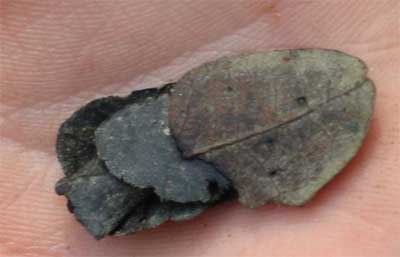
And, rather delightfully, some jewellers place caddis fly larvae in aquariums with tiny pieces of gold and precious stones so that the insect makes its armour out of 22-carat rather than 22 twigs:
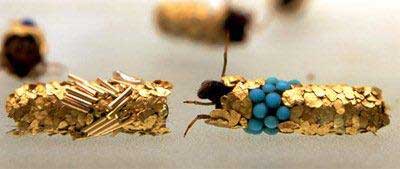
The Wildlife Gardener doesn’t hanker much after jewellery and sparkly things, but this did catch my eye as a rather wonderful piece of ‘natural’ creation (rather like amber with insects trapped in it). My only concern would be how long the silk and glue holding the casing together would last. It would be such a shame for the whole thing to disintegrate. How on earth would you get it mended?
- Spurn Spawn! - 26th February, 2014
- Bluebells on wheels: axles of evil? - 2nd February, 2011
- Raising the ba: Wildlife and the Ancient Egyptian Book of the Dead - 8th January, 2011

Extremely cool. I love caddisflies and so does my protagonist, Sissy.